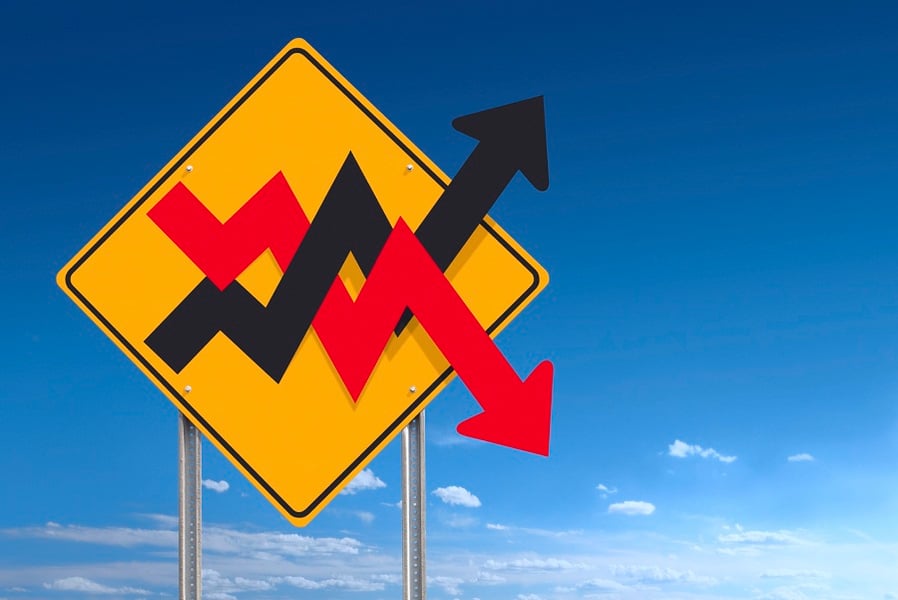

Extreme market and economic uncertainty calls for creativity, especially when it comes to measuring and monitoring investor risk tolerance levels.
Acknowledging the stock market volatility this year, initially triggered by the COVID-19 pandemic, Bryan Kirk, director of financial and estate planning at Fiduciary Trust International, said risk tolerance needs to be looked at more objectively.
“One of the pitfalls is subjective risk tolerance questionnaires, which I guarantee were different in March than they were in December,” he said during a Wednesday morning webcast focused on how the pandemic has altered financial planning.
“I see a shift of working toward objective risk tolerance that looks at things like goals, spending plans and how that evolves over time,” Kirk said, adding that the idea of an objective analysis of risk tolerance should be able to grow.
Beyond gaps in investor risk tolerance levels, Kirk said the record-level market volatility has also exposed a general lack of preparedness among some investors who don’t have “liquidity or emergency funds, or even the ability to pay bills.”
And those liquidity shortfalls are not just found among working class clients.
“We also see it on the ultra-high-net-worth end,” he said. “Some of the largest foundations in the country are selling bonds to meet grant commitments.”
Part of the market’s volatility that has so many investors rethinking their risk tolerance levels is a stunning 40% climb off the March 23 low, which is now raising questions about whether the markets are out of sync with what’s happening in the real world.
“I would say the equity markets are out of sync with what a certain part of the population is feeling,” said Kenneth Van Leeuwen, founder and managing director of Van Leeuwen & Co.
“We’re humbled by individuals who have lost their jobs and are unable to go back to work, but what the market is looking for is what nine, 12, 18 months into the future will be,” he added.
Citing the government stimulus efforts, including unprecedented actions from the Federal Reserve that includes buying high-yield corporate bonds, Van Leeuwen said investors need to follow the mantra: “Never fight the Fed.”
“That’s the environment we’re in,” he said. “The Fed is being accommodative for increased economic activity.”
While he acknowledged the impact of shutting down the economy to try and manage the coronavirus, Van Leeuwen said the key to the recovery will be getting people back to work.
In the meantime, he said there will be winners and losers that surface in the financial markets.
“There are certain areas of the economy and certain companies that are benefiting, such as Lowes and Home Depot,” he said. “We know the clear losers are companies like airlines, restaurants and hotels. But we don’t know who the clear winners are yet.”
Another byproduct of the recent events, particularly related to the protests and general social unrest, is an increased focus on values-based investing.
On the topic of “catalysts for change,” Stuart Riemer, managing director and partner at Treasury Partners at HighTower, said, “There’s been a lot of that this year.”
Riemer said he is seeing an increased appetite for portfolios that “better reflect certain values.”
“Historically, there was an exclusionary approach” to values-based investing, he said. “But now more people are looking at how they can integrate sustainable investing into a portfolio.”

Integrated Partners is adding a mother-son tandem to its network in Missouri as Kestra onboards a father-son advisor duo from UBS.

Futures indicate stocks will build on Tuesday's rally.

Cost of living still tops concerns about negative impacts on personal finances

Financial advisors remain vital allies even as DIY investing grows

A trade deal would mean significant cut in tariffs but 'it wont be zero'.
RIAs face rising regulatory pressure in 2025. Forward-looking firms are responding with embedded technology, not more paperwork.
As inheritances are set to reshape client portfolios and next-gen heirs demand digital-first experiences, firms are retooling their wealth tech stacks and succession models in real time.
